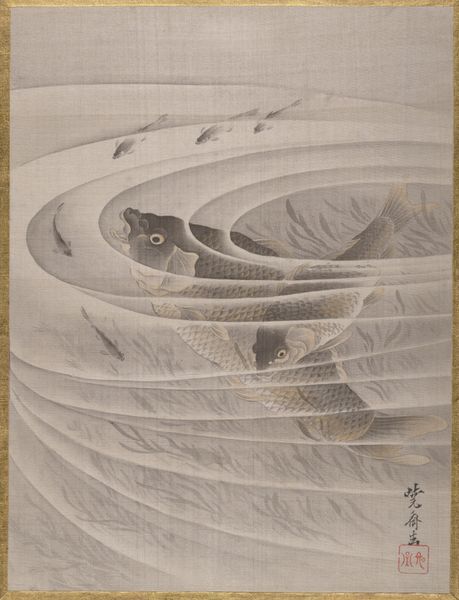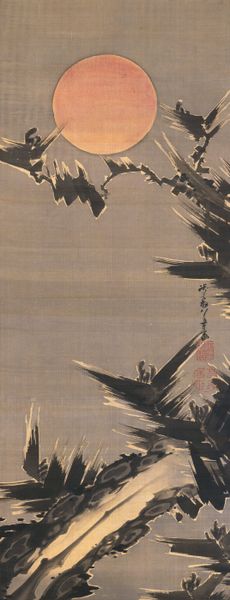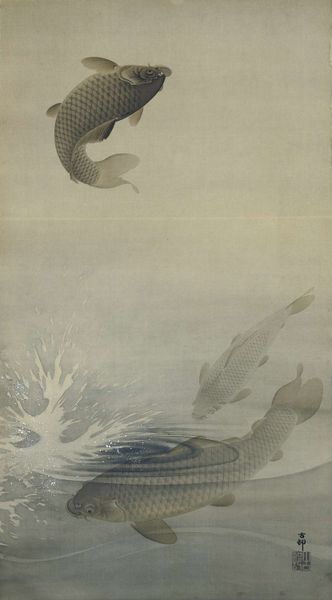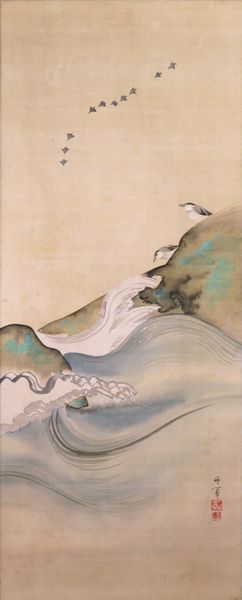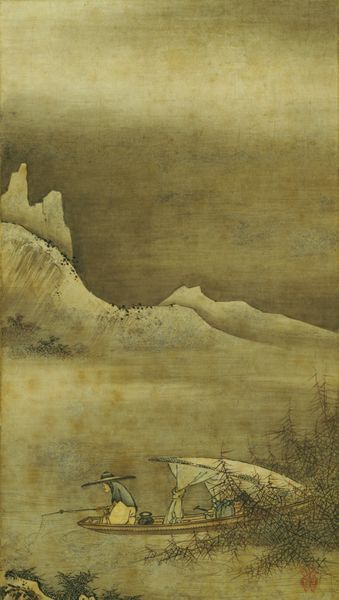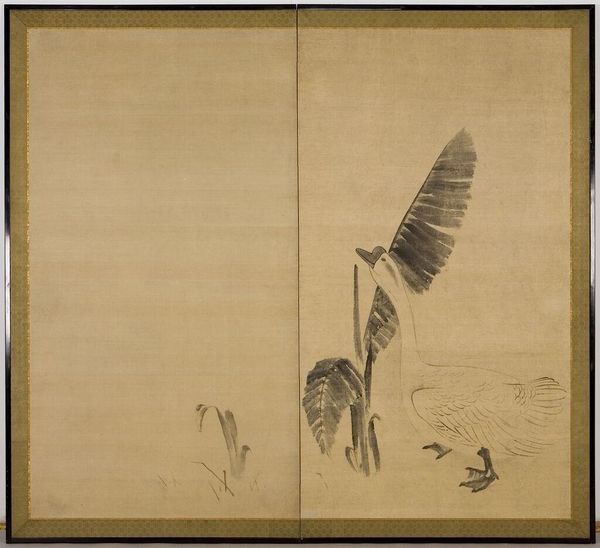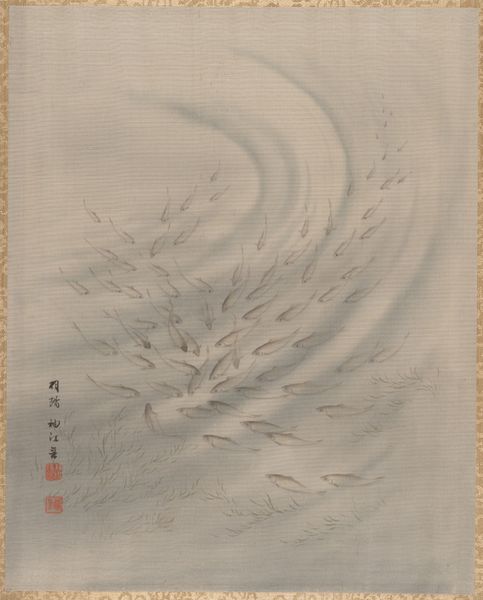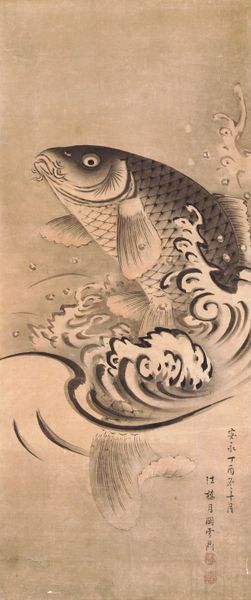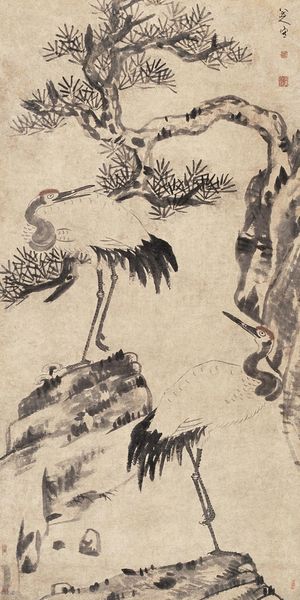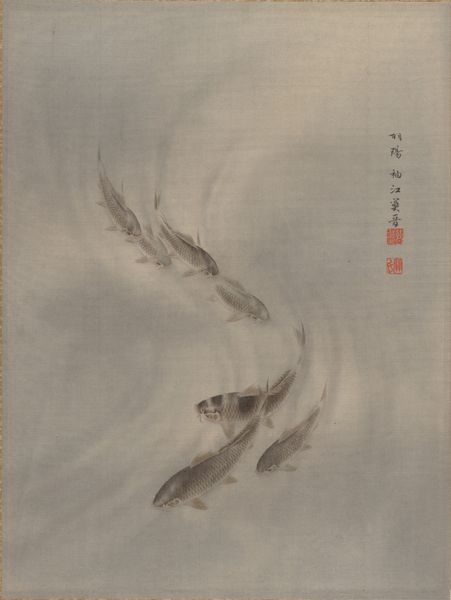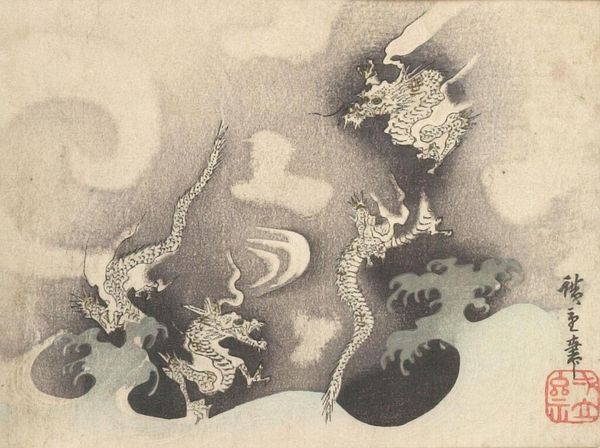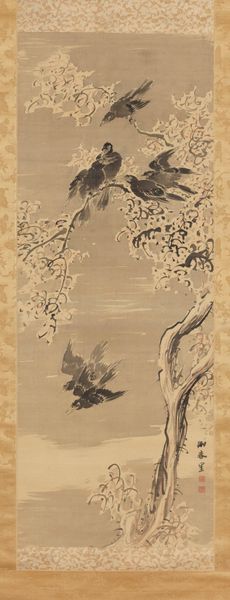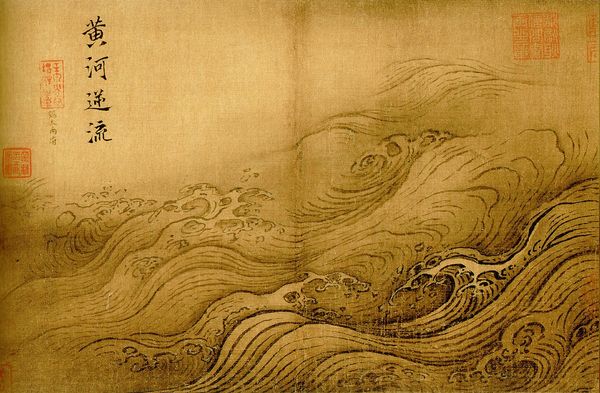![Swimming Carp [left of a pair of Carps] by Tsukioka Settei](/_next/image?url=https%3A%2F%2Fd2w8kbdekdi1gv.cloudfront.net%2FeyJidWNrZXQiOiAiYXJ0ZXJhLWltYWdlcy1idWNrZXQiLCAia2V5IjogImFydHdvcmtzLzNmNDQ2N2JjLTkyYzEtNDQ3Yy04OTMwLTlhNzRkNGYyMTM0MC8zZjQ0NjdiYy05MmMxLTQ0N2MtODkzMC05YTc0ZDRmMjEzNDBfZnVsbC5qcGciLCAiZWRpdHMiOiB7InJlc2l6ZSI6IHsid2lkdGgiOiAxOTIwLCAiaGVpZ2h0IjogMTkyMCwgImZpdCI6ICJpbnNpZGUifX19&w=3840&q=75)
paper, ink-on-paper, ink
#
asian-art
#
landscape
#
ukiyo-e
#
japan
#
figuration
#
paper
#
ink-on-paper
#
ink
#
orientalism
#
line
Dimensions: 50 5/8 × 21 3/16 in. (128.59 × 53.82 cm) (image)78 3/16 × 27 3/8 in. (198.6 × 69.53 cm) (mount, without roller)
Copyright: Public Domain
Tsukioka Settei created this hanging scroll, "Swimming Carp," in 18th-century Japan using ink and color on silk. In Japan, the carp is a symbol of perseverance, strength, and success because of its ability to swim upstream and even leap waterfalls. This particular carp, rendered with careful attention to its scales and fins, and with the addition of rippling water, may have been commissioned to celebrate the success of a male child, or to serve as an aspiration for the future. During the Edo period, when this artwork was made, there was a rigid social hierarchy. Those outside the ruling samurai class were excluded from positions of power. The popularity of carp imagery at this time suggests a broader cultural desire for upward mobility, and we find carp motifs in many forms of popular art. To fully understand the significance of this artwork, scholars research Edo-period social structures and cultural symbolism. By understanding the historical context, we gain insight into the complex ways the artwork engages with social values.
Comments
No comments
Be the first to comment and join the conversation on the ultimate creative platform.
